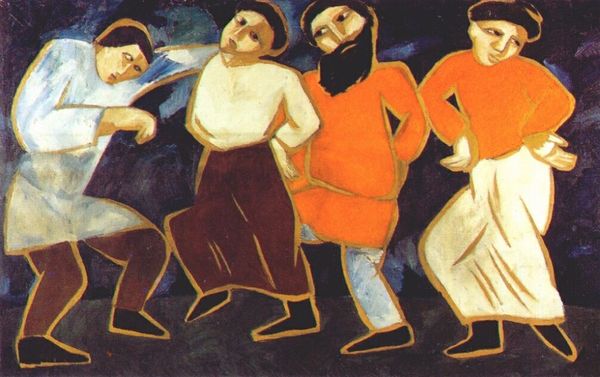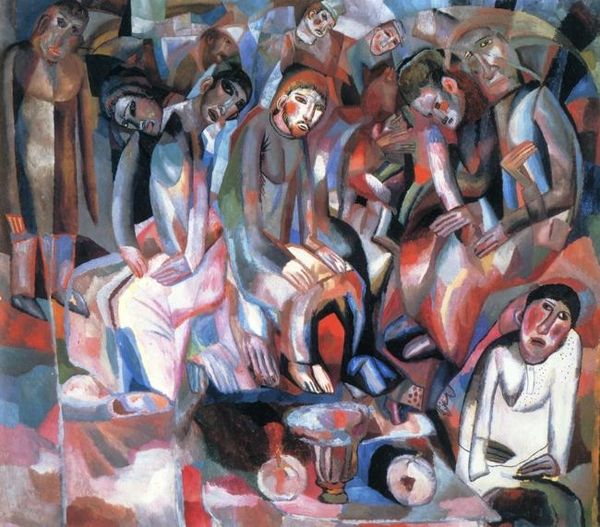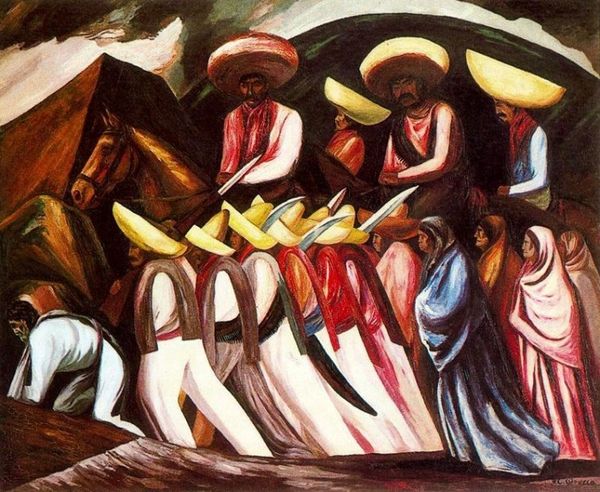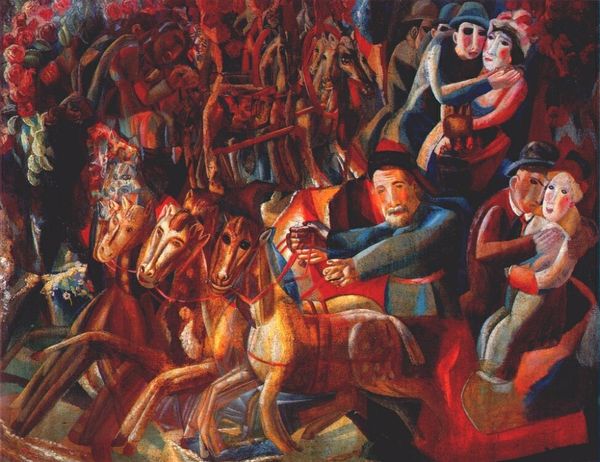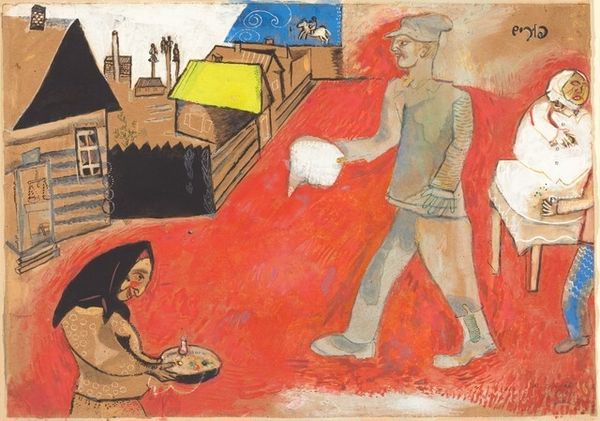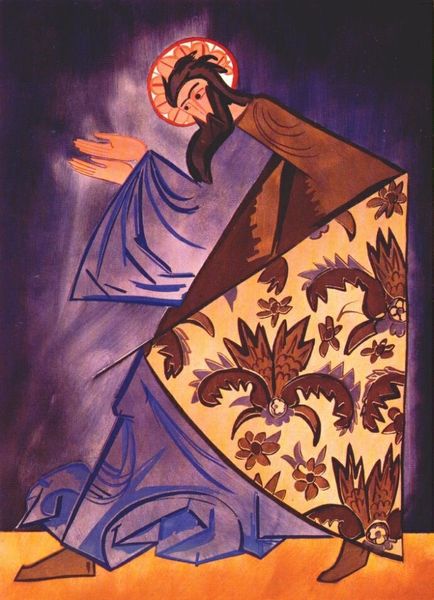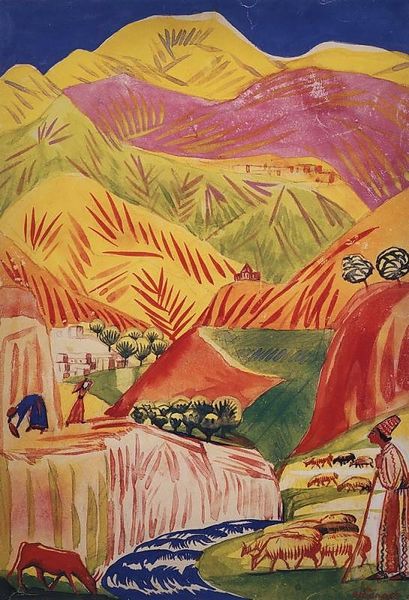
painting
#
portrait
#
woman
#
abstract painting
#
painting
#
rayonism
#
house
#
figuration
#
expressionism
#
cityscape
#
genre-painting
#
street
#
portrait art
#
fine art portrait
#
expressionist
#
building
Copyright: Public domain US
Curator: Natalia Goncharova's painting, "Washerwomen," from 1911 offers a fascinating glimpse into early 20th-century Russia. Editor: It's so visceral! That bold red… It almost feels like heat radiating from the canvas, mixed with a kind of defiant energy. What kind of commentary do you think she was making about labor with it? Curator: I think Goncharova highlights the process, transforming labor into a study of form. These women, who would have been common figures on city streets and the banks of rivers, are presented as almost monumental. I notice the way she simplifies their forms, flattening them against this stylized cityscape. This flattens any individualistic portraiture for generalized materiality. Editor: Absolutely. Look at the laundry—it's practically vibrating, almost like it’s fighting to exist under such circumstances! But you're right. Even their clothing is stylized; look at the cobalt brushwork representing heavy skirts and garments. It's definitely turning labor into art and a monument to process. Curator: Precisely! There's no romanticizing here. Goncharova isn’t selling a pastoral fantasy; it's rough, immediate, and raw, but her visual vocabulary and language create new appreciation. The color choices aren't what one would expect to find either in this type of genre or in a literal portrait of working women. It gives an almost revolutionary character to everyday experience and existence. Editor: True, those angular houses and jagged edges speak of a world far from idyllic. The laundry becomes a central focus. Are they literally hanging out or trying to define a new paradigm and its constraints through work? I do find it a refreshing vision and take, considering what came later from a political viewpoint in terms of how to visualize labor, so her version resonates a bit louder now, more realistically maybe, I would suggest. Curator: Indeed. The painting is both an homage and an unvarnished look at labor. A reminder, perhaps, that even the most ordinary tasks are filled with life and strength. Editor: A fitting visual metaphor for the often-unseen efforts that quite literally "clean up" the world, now, viewed with its dignity.
Comments
No comments
Be the first to comment and join the conversation on the ultimate creative platform.
